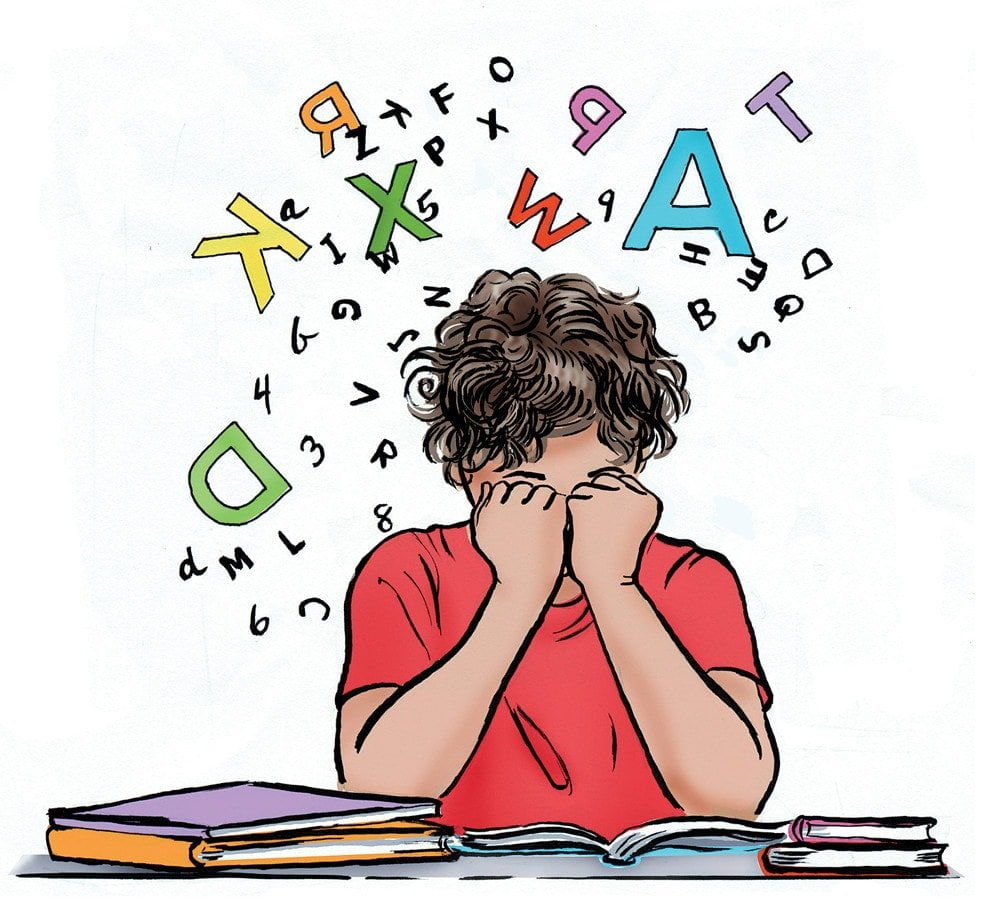Welcome to our blog post on understanding and managing dyslexia. In this article, we will delve into the causes and symptoms of dyslexia, as well as explore the process of diagnosing this learning disorder through assessment and testing. We will also provide strategies for managing dyslexia through education and support, with a focus on empowering individuals with dyslexia to build their self-esteem and confidence. Additionally, we will discuss the role of assistive technologies in overcoming the challenges faced by individuals with dyslexia. So, let’s dive in and discover a wealth of knowledge on dyslexia and how to navigate its effects.
Understanding Dyslexia: Causes And Symptoms
Understanding Dyslexia: Causes And Symptoms
Dyslexia is a neurodevelopmental condition that affects individuals’ ability to read, write, and spell. It is a lifelong condition that manifests in early childhood and continues into adulthood. People with dyslexia have difficulty processing language, which can lead to challenges in academic and everyday life.
There is no single cause of dyslexia, but research suggests that it is often hereditary. Genetic factors play a significant role in the development of dyslexia, as people with a family history of the condition are more likely to have it themselves. Additionally, certain brain differences have been observed in individuals with dyslexia, specifically in areas responsible for language processing and phonological awareness.
The symptoms of dyslexia can vary from person to person, but commonly include difficulties in reading, spelling, writing, and pronouncing words. Individuals with dyslexia may also have trouble with organization and time management skills. Despite these challenges, individuals with dyslexia often have strengths in areas such as problem-solving, creativity, and critical thinking.
Diagnosing Dyslexia: Assessment And Testing
Dyslexia is a learning disorder that affects the ability to read, spell, and write. It is a neurodevelopmental condition that impacts the way the brain processes language. Dyslexia is often present from childhood and can persist into adulthood. Individuals with dyslexia may have difficulty with phonological processing, decoding words, and recognizing sight words. They may also struggle with reading fluency and comprehension. It is important to diagnose dyslexia early so that appropriate interventions and support can be provided.
Assessment and testing play a crucial role in diagnosing dyslexia. The process typically involves a comprehensive evaluation conducted by a team of professionals, including educational psychologists, speech and language therapists, and special education teachers. The assessment may include a variety of tests and measures to assess different aspects of reading and language skills. These assessments aim to identify the specific areas of difficulty and determine the severity of the condition.
One common assessment tool used in the diagnosis of dyslexia is a standardized test of reading ability. This test measures various components of reading, such as phonological awareness, word recognition, and reading comprehension. The results of the test can provide valuable information about the individual’s reading skills and help identify any significant discrepancies between their reading abilities and their age or grade level expectations.
In addition to standardized tests, other diagnostic measures may be used to assess specific aspects of dyslexia. These may include tests to evaluate phonemic awareness, rapid naming skills, and working memory. By conducting a comprehensive assessment, professionals can gather a complete picture of the individual’s strengths and weaknesses in relation to reading and language processing.
- Phonological awareness
- Word recognition
- Reading comprehension
- Phonemic awareness
- Rapid naming skills
- Working memory
It is important to note that diagnosing dyslexia is not a one-size-fits-all process. Every individual is unique, and their assessment should be tailored to their specific needs. The assessment results, along with other relevant information, can then be used to develop an individualized plan for support and intervention.
| Assessment measures | What they evaluate |
|---|---|
| Standardized reading test | Overall reading ability |
| Phonological awareness test | Ability to manipulate and recognize sounds in words |
| Rapid naming test | Speed and accuracy in naming letters or objects |
| Working memory test | Ability to hold and manipulate information in memory |
In conclusion, diagnosing dyslexia involves a comprehensive assessment and testing process. Professionals use a range of tests and measures to evaluate the individual’s reading and language skills, as well as their strengths and weaknesses. This information is crucial in developing an appropriate plan for support and intervention. Early identification and diagnosis of dyslexia can greatly benefit individuals by ensuring they receive the necessary assistance to overcome their challenges and succeed academically.
Strategies For Managing Dyslexia: Education And Support
Strategies for Managing Dyslexia: Education and Support
Dyslexia is a learning disorder that affects an individual’s ability to read, write, and spell. It is a neurological condition that is often present from childhood and can persist into adulthood. People with dyslexia have difficulty processing and understanding language, which can make it challenging for them to acquire literacy skills. However, with the right education and support, individuals with dyslexia can learn strategies to manage their condition and thrive academically and personally.
One of the key components in managing dyslexia is providing appropriate educational interventions. These interventions focus on teaching individuals with dyslexia to decode and comprehend written language effectively. They include multi-sensory teaching methods, such as the Orton-Gillingham approach, which integrates visual, auditory, and kinesthetic techniques to improve reading and spelling skills. Additionally, specialized programs that target specific areas of difficulty, such as phonological awareness and phonemic awareness, have been found to be effective in supporting dyslexic learners.
Support services and accommodations are also essential for individuals with dyslexia. These may include extra time on exams, the use of assistive technology, and access to note-takers or scribes. Additionally, providing emotional support and fostering a positive learning environment is crucial for the well-being and confidence of individuals with dyslexia. Educators and support professionals can help create an atmosphere that celebrates strengths, encourages self-advocacy, and promotes a growth mindset, which is the belief that abilities can be developed through dedication and hard work.
- In conclusion, managing dyslexia requires a comprehensive approach that combines both education and support. With appropriate interventions and accommodations, individuals with dyslexia can overcome challenges and achieve academic success. By fostering a positive learning environment and providing emotional support, we can empower individuals with dyslexia, building their self-esteem and confidence. It is important to remember that dyslexia is not a reflection of intelligence or effort, and with the right strategies in place, individuals with dyslexia can reach their full potential.
Empowering Individuals With Dyslexia: Building Self-Esteem And Confidence
Dyslexia is a learning disorder that affects individuals’ ability to read, write, and spell. It is important to understand what dyslexia is and how it impacts those who have it. Dyslexia is not indicative of a person’s intelligence or effort; rather, it is a neurological condition that affects the way the brain processes information. Individuals with dyslexia often face challenges in academic settings and their daily lives. However, with the right strategies and support, individuals with dyslexia can overcome these challenges and build self-esteem and confidence.
One key strategy for empowering individuals with dyslexia is the provision of education and support. Education plays a crucial role in helping individuals with dyslexia understand their condition and learn effective coping mechanisms. By providing comprehensive information about dyslexia, educators can encourage a sense of self-awareness and acceptance among students. Moreover, teachers should be trained in inclusive teaching methods that cater to the diverse learning needs of dyslexic students. Additionally, creating a supportive learning environment where students feel comfortable seeking help and accommodations is essential.
Another important aspect of empowering individuals with dyslexia is building their self-esteem and confidence. Dyslexia can often lead to feelings of frustration, inadequacy, and low self-worth. In order to counteract these negative emotions, it is crucial to nurture a positive mindset and promote a growth mindset. Encouraging individuals with dyslexia to focus on their strengths, celebrate their achievements, and set realistic goals can significantly boost their confidence. Additionally, involving them in activities that cater to their interests and talents can help them excel and develop a strong sense of self-worth.
Furthermore, it is important to recognize and address the emotional and psychological impact of dyslexia. Individuals with dyslexia may experience increased levels of anxiety, stress, and depression due to their learning difficulties, societal stigma, or negative past experiences. Offering psychological support through counseling or therapy can help individuals manage their emotions and develop effective coping strategies. By providing a safe space for individuals with dyslexia to express their feelings and concerns, they can learn to navigate through challenges and develop a positive mindset.
- To summarize, empowering individuals with dyslexia involves providing education, support, and strategies that help build their self-esteem and confidence. By understanding the challenges faced by individuals with dyslexia and addressing their unique needs, we can create an inclusive environment that allows them to thrive. Through education, awareness, and fostering a positive mindset, we can empower individuals with dyslexia to reach their full potential.
| Causes of Dyslexia | Symptoms of Dyslexia |
|---|---|
| Dyslexia is believed to have genetic and neurological origins. It is often passed down through families, indicating a hereditary component. Furthermore, research suggests that dyslexic individuals have structural and functional differences in their brains that affect their ability to process language. | Some common symptoms of dyslexia include difficulty with reading, writing, and spelling. Dyslexic individuals may have trouble recognizing letters, decoding words, and understanding the meaning of written text. They may also struggle with organization, time management, and following instructions. |
Overcoming Challenges: Assistive Technologies For Dyslexia
Dyslexia is a learning disorder that affects the ability to read, write, and spell. It is characterized by difficulties with phonological awareness, decoding, and processing information. Individuals with dyslexia may struggle with reading comprehension, fluency, and vocabulary development. Dyslexia is a neurological condition that is not related to intelligence or vision. It is estimated that about 10% of the population worldwide has dyslexia.
One of the key challenges for individuals with dyslexia is accessing written information. However, with the advancements in technology, there are various assistive technologies available to help overcome these challenges. These technologies are designed to support individuals with dyslexia by providing them with alternative ways to access, process, and present information.
Text-to-Speech Software: One of the most commonly used assistive technologies for dyslexia is text-to-speech software. This technology allows individuals to listen to written text instead of reading it. It converts written words into spoken words, enabling individuals with dyslexia to comprehend the material more effectively. Text-to-speech software can be used on computers, tablets, and smartphones, making it highly accessible.
Speech-to-Text Software: Another useful assistive technology for dyslexia is speech-to-text software. This technology allows individuals to dictate their thoughts and ideas, which are then converted into written text. Speech-to-text software can be beneficial for individuals who struggle with writing and spelling. It helps them overcome the challenges they face in expressing themselves in written form.
Graphic Organizers: Graphic organizers are visual tools that help individuals with dyslexia organize their thoughts and ideas. These tools provide a clear structure and help individuals understand the relationships between different pieces of information. Graphic organizers can be used for note-taking, brainstorming, and organizing writing assignments. They help individuals with dyslexia overcome challenges related to organization and planning.
| Assistive Technologies for Dyslexia | Description |
|---|---|
| Text-to-Speech Software | Converts written text into spoken words |
| Speech-to-Text Software | Converts spoken words into written text |
| Graphic Organizers | Visual tools for organizing thoughts and ideas |





